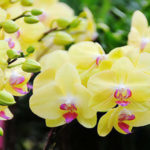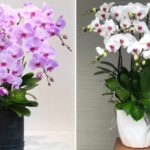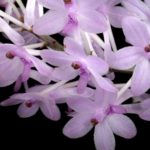The Dendrobium aphyllum, or more commonly known as the lan hạc vỹ, is a captivating flower that has captivated many enthusiasts. This guide will teach you how to cultivate and care for this exquisite orchid.
1. Introduction to the Lan Hạc Vỹ
 The scientific name for Lan Hạc Vỹ is Dendrobium aphyllum
The scientific name for Lan Hạc Vỹ is Dendrobium aphyllum
The Lan Hạc Vỹ, also known as the lan hạc vỹ thiên cung, lan hoàng thảo hạc vỹ, or lan đại ý thảo, is a stunning orchid species.
This orchid is widely cultivated in various countries, including India, China, Thailand, Vietnam, Myanmar, Laos, Malaysia, and Butan.
In Vietnam, the Lan Hạc Vỹ can be found from the north to the south, but it is mainly cultivated in provinces such as Vinh Phuc, Hoa Binh, Thanh Hoa, Son La, and Nghe An.
While it can survive in both the north and south regions, its characteristics and colors vary depending on the local climate.
The Lan Hạc Vỹ is an epiphytic orchid, often found growing on large trees in forests or on tree trunks about 400–1500 cm tall. Its stems hang down, cylindrical in shape, with an average diameter of 0.5–1 cm.
The leaves are a deep green, lanceolate, and measure about 6–8 cm in length.
The orchid produces multiple small flowers that grow in long chains and droop gracefully. Each flower has a diameter of about 4 cm, with a pale purple color and a pale yellow lip.
The Lan Hạc Vỹ typically blooms in the middle of winter, but it is at its most beautiful at the end of winter and the beginning of spring. Additionally, it emits a gentle and pleasant fragrance.
2. Different Types of Lan Hạc Vỹ and Their Characteristics
 Popular varieties of Lan Hạc Vỹ
Popular varieties of Lan Hạc Vỹ
Today, through crossbreeding and propagation, there are numerous varieties of Lan Hạc Vỹ with different colors. However, some of the most common types are listed below:
- Lan rừng hạc vỹ (Wild Lan Hạc Vỹ)
- Hạc vỹ hoa hồng đỏ (Red Rose Lan Hạc Vỹ)
- Lan hạc vỹ thiên cung
- Lan hạc vỹ thiên cung lữ bố
- Lan hạc vỹ bắc (Northern Lan Hạc Vỹ)
- Lan hạc vỹ trắng (White Lan Hạc Vỹ)
- Lan hạc vỹ tím (Purple Lan Hạc Vỹ)
- Lan hạc vỹ lào (Laotian Lan Hạc Vỹ)
3. The Significance of the Lan Hạc Vỹ
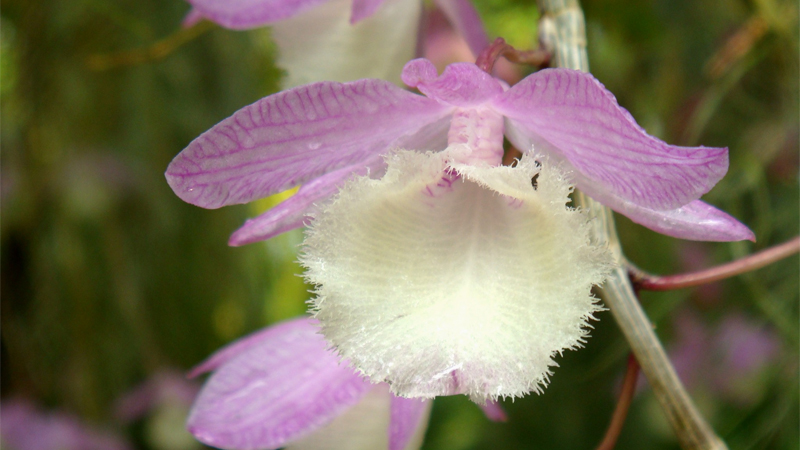 The meaning of the Lan Hạc Vỹ
The meaning of the Lan Hạc Vỹ
The Lan Hạc Vỹ symbolizes love, respect, purity, and new beginnings. It also represents kindness and innocence.
Furthermore, many people believe that this orchid represents sincere and faithful love.
4. How to Cultivate and Care for the Lan Hạc Vỹ
Cultivation Techniques
 Growing Lan Hạc Vỹ
Growing Lan Hạc Vỹ
Preparation
Timing: The best time to buy and plant Lan Hạc Vỹ is at the end of autumn to the beginning of winter.
Environment: This orchid thrives in bright, dry, and cool environments with about 60% humidity and 70% sunlight.
Selecting Seedlings: Choose Lan Hạc Vỹ seedlings that have not yet developed new buds, with grayish-silver stems and yellowing leaves. Ensure the seedlings are dry and not damp.
Growing Medium: Use wood or grapefruit tree roots as the growing medium, as they provide the necessary water and air circulation for the orchid’s roots. Soak the wood in water and limewater before planting to disinfect it.
Planting
Before planting, cut off damaged and old roots, leaving only 2–3 cm of roots. Soak these roots in a physan solution for 20 minutes to eliminate any pests or diseases. Then, hang the roots to dry for 3–5 days.
Next, use a steel U-shaped staple gun to attach the orchid to the wood. Ensure the roots are secure and about 1/3 to 1/5 of the total roots are left free. Allow the plant to dry for a week without watering to heal the wounds.
Care Techniques
 Caring for Lan Hạc Vỹ
Caring for Lan Hạc Vỹ
Watering
Mist the orchid to provide moisture, but avoid overwatering. Hang the plant in a cool, well-ventilated area, and maintain moisture in the underlying soil to keep the plant cool.
Fertilization
During the seedling stage and before new roots appear, do not fertilize the plant. The orchid will draw nutrients from its old stem to produce new growth, and young roots are susceptible to rot from standing water.
Once new roots appear, fertilize with NPK 30-10-10, mixing 1 gram per 4 liters of water, and spray the entire plant. Fertilize once a month, except from October onwards, when the plant enters its resting phase.
Pest and Disease Control
Although Lan Hạc Vỹ is a forest orchid with strong resistance, it can still be affected by pests and diseases. To prevent this, spray the plant with a mixture of Ridomil gold, Alitte, and regan every 15 days.
Regularly observe and inspect the plant to detect any abnormalities and take appropriate measures to ensure the orchid’s health.
Adjustments
You can manipulate the orchid’s blooming by adjusting its sunlight exposure and watering. Here are some tips:
- Place the plant outdoors to absorb natural sunlight.
- Adjust watering during the winter, and stop watering at the beginning of spring. Resume watering when buds appear and new shoots emerge.
- In August, start fertilizing with a mixture of 6-30-30 fertilizer and trace elements (TE) to encourage flowering.
- Ensure the planting location has ample sunlight, wind, dry climate, and about 80% natural light.
5. Where to Buy Lan Hạc Vỹ and Price Range
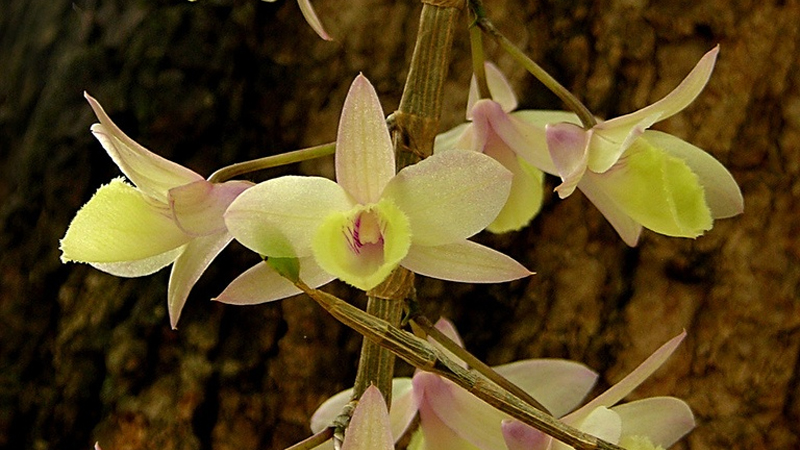 Lan Hạc Vỹ for purchase
Lan Hạc Vỹ for purchase
You can buy Lan Hạc Vỹ from reputable plant shops or nurseries nationwide. It is also available on e-commerce platforms like Shopee and Lazada.
Regardless of where you purchase it, make sure to ask for advice and guidance on selecting a healthy plant and learning about its specific care requirements.
The market price for Lan Hạc Vỹ ranges from 100,000 to 150,000 VND per kilogram. Potted orchids are priced from 200,000 to 500,000 VND, and some can even cost several million VND.
We hope this guide has provided you with valuable information on how to cultivate and care for the Lan Hạc Vỹ and given you a deeper appreciation for this beautiful orchid.
Unlock the secret to growing beautiful, long-lasting Italian orchids indoors
The Phalaenopsis orchid is a popular and easy-to-care-for houseplant that is beloved by many. With its beautiful and vibrant blooms, it is no wonder that this orchid has become a favorite among plant enthusiasts. Once you know how to properly care for it, the Phalaenopsis orchid will reward you with frequent and stunning displays of flowers.
The Majesty of the Golden Yellow Orchid: Unveiling the Beauty and Simplicity of Growing the Phalaenopsis
The Golden Swallow Orchid is a flower of exquisite and unique beauty. Delve into the origins, symbolism, and classification of this fascinating orchid. Discover the allure of the Golden Swallow Orchid through a captivating exploration of its 8 stunning images, each a testament to its graceful elegance.




























